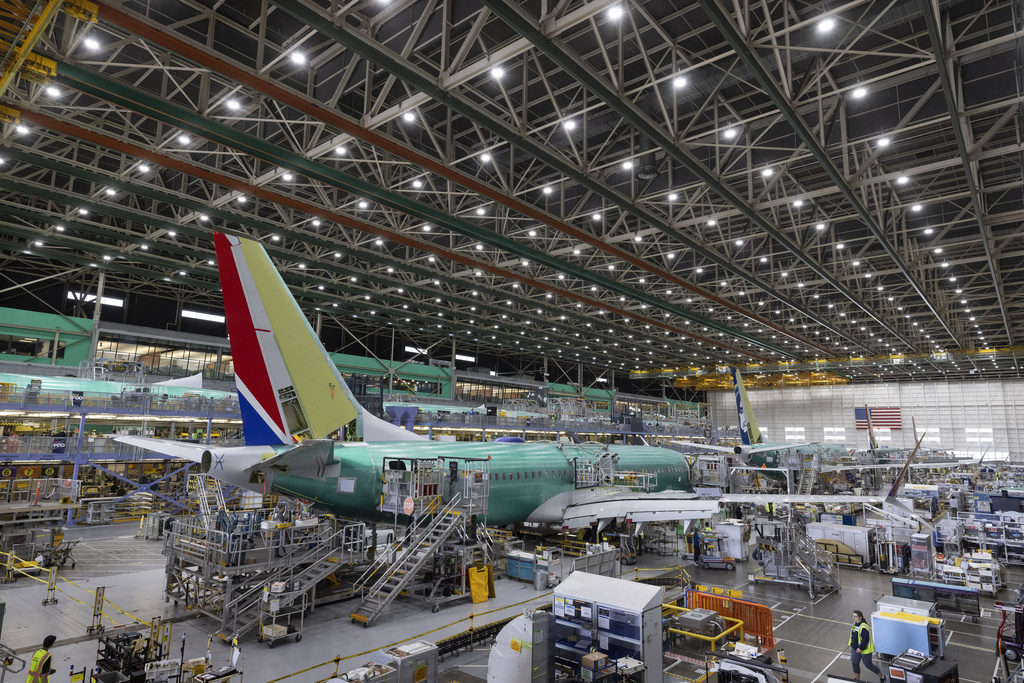Boeing Cuts 438 Union Jobs Amid Financial Challenges \ Newslooks \ Washington DC \ Mary Sidiqi \ Evening Edition \ Boeing has issued layoff notices to 438 members of its professional aerospace labor union, part of a sweeping plan to cut 10% of its workforce—17,000 jobs—in response to financial difficulties, regulatory hurdles, and a recent machinists’ strike. The layoffs impact engineers, analysts, and technicians represented by the Society of Professional Engineering Employees in Aerospace (SPEEA). While affected workers will receive severance and career transition support, Boeing’s broader troubles, including FAA restrictions on 737 MAX production, pose significant challenges to its recovery.
Boeing Workforce Cuts: Quick Looks
- Scope of Layoffs: 438 union members from SPEEA have been issued notices, part of a planned 17,000 layoffs.
- Union Breakdown: Affected workers include engineers, scientists, analysts, and skilled tradespeople across multiple states.
- Severance Support: Laid-off employees are entitled to severance, healthcare benefits for three months, and career transition assistance.
- Underlying Issues: Boeing struggles with regulatory limits, overstaffing, financial losses, and a strained recovery post-machinists’ strike.
- Production Bottlenecks: FAA restrictions on 737 MAX production and other setbacks further impede Boeing’s progress.
Deep Look
Impact on Union Workers
The affected workers are primarily represented by SPEEA, a labor union that includes over 17,000 Boeing employees, most of whom are based in Washington state, with smaller numbers in Oregon, California, and Utah. Of the 438 layoffs:
- 218 workers belong to the professional unit, which includes engineers, scientists, and other high-skill roles critical to Boeing’s operations.
- 220 workers are from the technical unit, comprising analysts, planners, and skilled tradespeople who support the company’s production and technical processes.
The layoffs were announced through formal notices last week, though impacted employees will remain on Boeing’s payroll until mid-January 2024.
Support for Affected Employees
Boeing has outlined several measures to assist displaced workers. Eligible employees will receive:
- Severance pay: Typically equivalent to one week of salary for each year of service.
- Healthcare benefits: Subsidized health insurance coverage for up to three months.
- Career transition services: Assistance in finding new employment opportunities, including resume workshops and job placement services.
While these benefits provide a safety net, they also underscore the significant human impact of Boeing’s financial and operational struggles.
Underlying Challenges and Financial Struggles
Boeing’s decision to reduce its workforce comes against the backdrop of mounting financial difficulties and regulatory scrutiny. A critical incident in January involving an Alaska Airlines aircraft, in which a panel detached from the fuselage, intensified production challenges and led to heightened oversight.
Machinists’ Strike and Its Fallout
Earlier this year, Boeing faced an eight-week machinists’ strike, which disrupted operations and added to financial strain. While some speculated that the strike directly contributed to the layoffs, Boeing CEO Kelly Ortberg clarified during an October call with analysts that the workforce reductions were a result of overstaffing rather than the strike itself.
“The strike certainly posed challenges to our finances,” Ortberg said, “but these layoffs are part of a broader need to reset workforce levels and align with our financial reality.”
The machinists have since returned to work, but the disruption highlights the labor tensions that continue to ripple through Boeing’s operations.
Broader Workforce Reductions and Company Strategy
Ortberg has emphasized that these layoffs are necessary to position the company for long-term success. However, critics have argued that Boeing’s challenges extend beyond workforce overcapacity, citing issues such as supply chain disruptions, reduced demand for new aircraft, and lingering reputational damage from the 737 MAX crisis.
Production and Regulatory Hurdles
In addition to workforce reductions, Boeing continues to face significant production bottlenecks and regulatory obstacles:
- 737 MAX Production: Despite the FAA’s cap of 38 planes per month, Boeing has struggled to meet this threshold.
- Operational Slowdowns: The Alaska Airlines fuselage incident highlighted quality control issues that have affected production timelines.
- Financial Pressures: Delays in production and regulatory approvals have compounded Boeing’s financial woes, leaving the company vulnerable to further market challenges.
Path Forward
However, with continued regulatory scrutiny and challenges in scaling production, Boeing faces an uphill battle to regain its standing as a leader in the aerospace industry.







